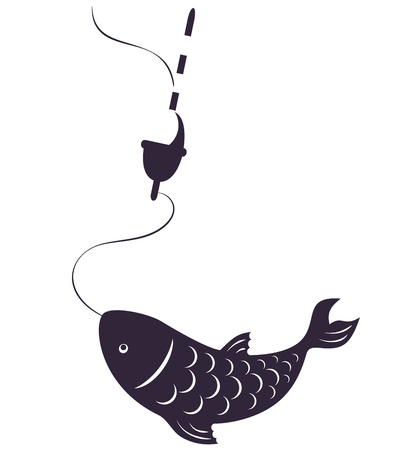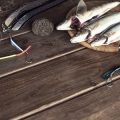1. Understanding Stocked versus Wild Trout in the UK
When fishing stillwaters across Britain, it’s vital to recognise the fundamental differences between stocked and wild trout. These differences influence everything from their daily behaviour to how you should approach them as an angler. Stocked trout, typically reared in hatcheries and released into lakes or reservoirs, are accustomed to regular feeding routines and human presence. As a result, they often exhibit bolder behaviour, especially soon after introduction, and may be less wary of anglers and artificial flies. On the other hand, wild trout have adapted over generations to natural British conditions. Their survival depends on instinctive caution, selective feeding, and acute awareness of predators, making them noticeably more challenging to catch.
In terms of habits, stocked fish tend to patrol open water or stick close to areas where they were released, frequently responding quickly to lures and flashy patterns. Wild trout, however, are more likely to hold near cover—such as weed beds, sunken trees, or marginal reeds—feeding opportunistically on native insect life. Their adaptation to local conditions means they’re highly responsive to subtle environmental changes like water clarity, light levels, and temperature shifts.
Understanding these distinctions is essential for developing effective tactics tailored to each type of fish. By observing their behaviour and recognising signs of natural adaptation versus hatchery conditioning, anglers can make smarter choices about fly selection, presentation, and even where to position themselves on the bank.
2. Identifying Trout Type on the Bank
Before you even cast your line, being able to tell the difference between stocked and wild trout on the bank is a key skill for British stillwater anglers. This knowledge not only enhances your fishing strategy but also deepens your understanding of local waters. Here are practical tips and British angling terms to help you distinguish between these two types of trout using visual and behavioural clues:
Key Observational Differences
| Feature | Stocked Trout | Wild Trout |
|---|---|---|
| Condition of Fins | Often frayed or rounded; may show signs of wear from rearing tanks. | Usually pristine, sharp-edged, and fully formed due to natural river life. |
| Colouration | Paler overall; less distinct spotting and colour contrast. | Darker, more vibrant colours with well-defined spots and parr marks (especially in brownies). |
| Body Shape | Stockier build; sometimes has a blunt nose and thicker body. | Sleeker, torpedo-shaped body suited for fast swimming. |
| Behaviour on the Bank | Tame, less wary; may flop or remain calm when handled. | Lively, vigorous struggle; noticeably more difficult to handle. |
| Pectoral Fins & Tail | Can be undersized or deformed from hatchery conditions. | Well-proportioned and undamaged fins and tail. |
British Angling Terminology in Practice
Listen out for local anglers using terms like “stockie” for recently released fish or “native” and “wild brownie” for indigenous brown trout. On many UK stillwaters, especially commercial fisheries, rainbow trout are predominantly stocked, while brown trout might be either stocked or wild depending on the water. If you hear talk of “fin-perfect fish”, it often refers to wild trout with immaculate fins—a sign of natural upbringing.
Practical Bankside Tips
- Examine Fins Closely: Use a quick visual check before releasing—tattered fins usually indicate a stockie.
- Observe Colour Patterns: Look for clear, vibrant markings typical of wild fish.
- Watch Behaviour: Wild trout will often bolt powerfully from the net, while stockies tend to tire quickly.
- Ask Locals: Don’t hesitate to chat with fellow rods—they’ll often know which pools hold wild fish versus recent introductions.
The Value of Accurate Identification
Developing this skill not only informs your approach but also supports catch-and-release best practice—especially where protecting wild stocks is crucial. By paying attention to these details, you’ll become a more knowledgeable and effective angler in British waters.

3. Tactics for Approaching Stocked Stillwater Trout
Stocked stillwater trout behave differently from their wild counterparts, and adapting your approach is essential for success on British lakes and reservoirs. Unlike wild fish, stocked trout are often less wary at first but can become increasingly cautious as they acclimatise and fishing pressure mounts. Here are UK-specific methods and strategies to maximise your chances with these fish.
Recommended Flies
British anglers targeting stocked trout typically reach for proven patterns such as the Blob, Cat’s Whisker, Damsel Nymph, and Buzzers. Early in the season or soon after a stocking, bright attractor flies like Orange Blobs or Viva variants can be deadly, especially when fished on an intermediate or sinking line. As trout become more educated, natural-looking patterns—Diawl Bachs, Crunchers, and Hare’s Ear nymphs—often outperform flashier offerings. Always carry a selection to adapt to the mood of the fish and water clarity.
Effective Retrieves
Retrieves should match both fly choice and trout behaviour. For recently stocked fish, a fast strip or roly-poly retrieve with lures can trigger aggressive takes. However, when fish are pressured or conditions are tough, slow figure-of-eight retrieves with Buzzers or nymphs tend to be more productive. Don’t neglect static presentations: letting a Booby or FAB suspend just off the bottom using a midge tip or floating line can be irresistible to cruising stockies.
Presentation Styles
Pay close attention to presentation. Stocked trout often patrol the margins before spreading out into deeper water, so start by casting parallel to the bank rather than straight out. Use longer leaders (up to 12 feet) to create a more natural drift, especially when fishing small nymphs or Buzzers under an indicator. Vary your depth regularly; stocked trout often hold at specific layers of the water column depending on temperature and oxygen levels. Using a washing line setup—with buoyant flies like Boobies on the point and nymphs on droppers—can cover multiple depths efficiently.
By understanding how stocked stillwater trout respond to pressure and changing conditions in British fisheries, you can tailor your tactics for consistent success throughout the season.
4. Tactics for Approaching Wild Stillwater Trout
When targeting wild trout in British stillwaters, it’s crucial to recognise that these fish are inherently more cautious and attuned to their environment compared to stocked trout. Field-tested tactics focus on stealth, careful fly selection, and natural presentation to increase your chances of success.
Stealth is Key
Wild trout are highly sensitive to disturbances in the water and along the bank. Move slowly and avoid sudden movements. Wear muted clothing that blends into the landscape—think olive, brown, or grey—to minimise your profile. Approach the water quietly, keeping low and using natural cover where possible. If wading is necessary, do so softly, avoiding splashing or stirring up sediment.
Choosing the Right Fly
Wild trout are accustomed to natural food sources and can be selective about what they eat. Matching the hatch is essential; observe what insects are present on or near the surface before selecting your fly. A table below summarises popular fly choices for British wild stillwaters:
| Fly Type | Typical Pattern | When to Use |
|---|---|---|
| Dry Fly | CDC Emerger, Black Gnat | During hatches or when fish are visibly rising |
| Nymph | Pheasant Tail Nymph, Hare’s Ear | Subsurface feeding or no visible rises |
| Buzzer (Chironomid) | Black Buzzer, Olive Buzzer | Calm conditions, especially spring and autumn |
| Lure/Streamer | Damsel Nymph, Minkie | Cloudy days or when fish are aggressive |
The Importance of Natural Presentation
A natural presentation is often the difference between a take and a refusal from a wild trout. Use long leaders and fine tippet (typically 4lb–6lb breaking strain) to reduce drag and make your fly land softly. Cast slightly upstream or across the wind so your fly drifts naturally with minimal line movement. Mend your line as needed to prevent unnatural drag that could spook wary fish.
Field-Tip: Adapt to Conditions
If you’re struggling for takes, change your approach by altering retrieve speed or switching to a smaller fly size. Sometimes simply pausing between retrieves can trigger a response from a cautious wild trout.
Summary Table: Key Tactics for Wild Stillwater Trout in Britain
| Tactic Area | Field-Tested Advice |
|---|---|
| Approach & Stealth | Wear camo colours, move slowly, use bankside cover, soft wading |
| Fly Choice | Match local insect life; prioritise nymphs and small dries over flashy lures |
| Presentation | Long leader/tippet, delicate casting, mend line for drag-free drift |
| Tactical Adjustments | Vary retrieve speed, switch fly size/type based on conditions and fish behaviour |
By tailoring your tactics specifically for wild trout in British stillwaters—focusing on discretion, authentic fly patterns, and lifelike presentation—you’ll greatly improve your success rate while enjoying the challenge these remarkable fish offer.
5. Adaptation to Local Waters and Weather
One of the most critical aspects of successful trout fishing in Britain is understanding how local waters and ever-changing weather patterns influence both stocked and wild trout behaviour. Whether you are casting a fly in the rolling hills of Derbyshire or exploring the rugged lochs of Scotland, adapting your approach to seasonal and regional conditions can make all the difference.
Seasonal Shifts: How British Seasons Shape Trout Behaviour
In spring, as temperatures rise and aquatic life awakens, wild stillwater trout become more active near the surface, eagerly feeding on hatching insects. Stocked trout, recently introduced to these waters, may linger in shallower margins, adjusting to their new environment. By summer, both wild and stocked fish often retreat to deeper, cooler areas during the midday heat, making early morning and late evening prime times for success. Come autumn, increased rainfall can cool water temperatures and bring a surge of insect activity, drawing trout—especially wild ones—back into the shallows. In winter, trout metabolisms slow down significantly; subtle presentations and slower retrieves are key, particularly when targeting resident wild fish accustomed to leaner pickings.
Regional Nuances: Understanding Your Fishery
British stillwaters are diverse, ranging from small village ponds to vast reservoirs. Southern English chalkstreams may offer clear water with abundant natural food sources, demanding fine leaders and imitative flies for wary wild fish. In contrast, northern reservoirs often feature peaty water that can obscure visibility; here, brighter or larger lures may be effective for both stocked and wild trout. Local knowledge is invaluable—don’t hesitate to chat with bailiffs or regulars about recent catches or hatches.
Weather Wisdom: Reading the British Skies
British weather is famously unpredictable, but seasoned anglers know how to turn this to their advantage. Overcast days generally encourage trout—particularly wild ones—to roam further from cover and feed more confidently at all depths. Sudden drops in barometric pressure can trigger feeding frenzies just before a storm rolls in. Conversely, bright sunshine tends to push fish deep or into shaded areas; use longer leaders and stealthier tactics under such conditions.
Practical Tips for Local Adaptation
– Always check local weather forecasts before heading out.
– Match your fly selection not only to the season but also to what’s currently hatching or abundant locally.
– Adjust retrieve speed: brisk in warmer months for aggressive fish, slow and steady in winter.
– When visiting a new venue, walk the banks first—look for signs of rising fish or recent angling pressure.
– Remember that stocked trout may behave unpredictably at first but soon adopt patterns similar to their wild counterparts as they acclimatise.
By tuning into local waters and ever-shifting British weather conditions, you’ll dramatically increase your chances of outsmarting both stocked and wild stillwater trout across the UK’s varied landscapes.
6. Etiquette and Conservation on British Stillwaters
Responsible angling goes far beyond simply catching fish—it’s about preserving the unique character of British stillwaters and ensuring a sustainable future for both stocked and wild trout populations. Whether you’re new to UK waters or a seasoned local, understanding and practising good etiquette as well as supporting conservation efforts are essential.
Respecting Local Customs and Regulations
Every stillwater fishery in Britain has its own set of rules and traditions. Always check notice boards or websites for up-to-date information before your visit. Common requirements include catch limits, designated fishing areas, fly-only policies, and specific seasons for targeting certain species. Remember that many UK waters operate on a “catch and release” basis, especially for wild trout—handle fish with wet hands, use barbless hooks, and minimise air exposure when releasing.
Interactions with Other Anglers
The British value politeness and consideration on the bank. Greet fellow anglers, maintain a respectful distance to avoid encroaching on their water, and never cast over another’s line. If you’re unsure of local etiquette, don’t hesitate to ask—a friendly approach is always appreciated in the UK angling community.
Contributing to Trout Conservation
Many British stillwaters depend on both stocking programmes and careful management of wild populations. Support local fisheries by purchasing day tickets or annual memberships; these funds often contribute directly to habitat improvement, water quality monitoring, and restocking efforts. Consider joining clubs such as the Wild Trout Trust or the Angling Trust to further conservation initiatives.
Reducing Your Impact
Minimise your footprint by taking litter home, using biodegradable products where possible, and reporting invasive species sightings to relevant authorities. Be mindful of delicate bankside vegetation—stick to established paths to prevent erosion.
Final Thought: Stewardship for Future Generations
Your actions today shape the legacy of British stillwater trout fishing. By practising responsible angling, respecting local customs, and actively supporting conservation, you help ensure that these iconic waters—and the trout within them—will thrive for generations to come.


